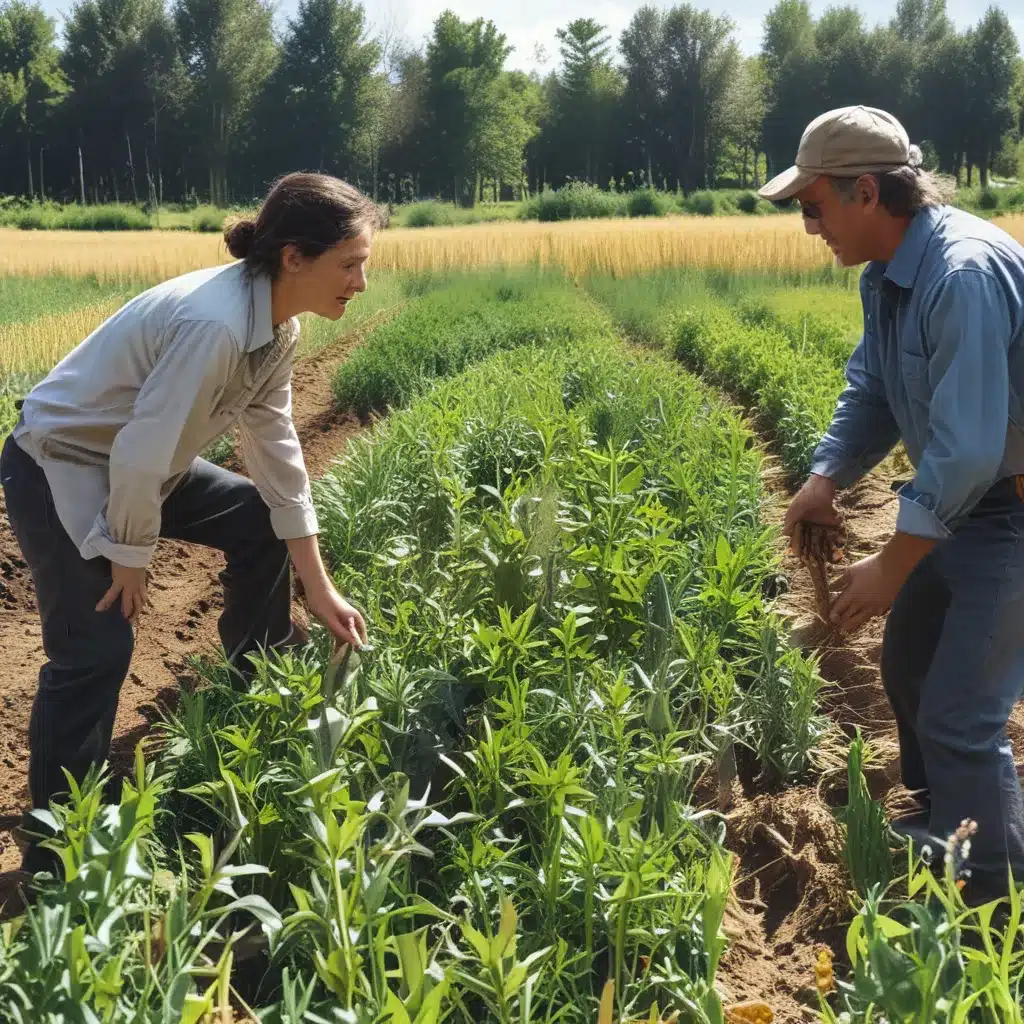
As I stroll through the lush, verdant rows of my community-supported agriculture (CSA) garden, the vibrant colors and harmonious dance of the plants captivate me. It’s as if Mother Nature herself has orchestrated a symphony of life, where each element plays a vital role in the grand symphony of abundance. This is the magic of intercropping, a practice that has not only transformed my CSA into a thriving oasis but has also inspired me to share its secrets with you, fellow growers.
The Transformation: From Monoculture to Diversity
Not long ago, my CSA garden was a sea of monotony, with row upon row of the same crop stretching as far as the eye could see. It was an efficient system, or so I thought, until I stumbled upon the concept of intercropping. The idea was simple yet revolutionary: instead of relying on a single crop, why not embrace the power of diversity?
Sustainable agriculture experts have long since recognized the benefits of this approach. By planting a variety of crops in the same area, farmers can harness the natural synergies that exist between different plants, creating a more resilient and productive system. And that’s precisely what I set out to do in my CSA garden.
The Art of Intercropping
As I began to experiment with intercropping, I quickly discovered that it was not merely a matter of throwing a handful of seeds into the ground and hoping for the best. No, this was an art form, a delicate dance that required careful planning and observation.
I started by studying the growth habits and nutrient requirements of various crops, pairing them in a way that would maximize the use of available resources. For example, I planted fast-growing, shallow-rooted vegetables like radishes and lettuce alongside slower-growing, deep-rooted crops like carrots and beets. This arrangement allowed the two sets of plants to access different layers of the soil, minimizing competition and ensuring that each had the nutrients it needed to thrive.
But the real magic happened when I introduced a third element to the mix: nitrogen-fixing plants, such as clover and legumes. These remarkable companions not only added visual interest to the garden but also worked tirelessly to replenish the soil with vital nutrients, reducing my need for costly and environmentally damaging fertilizers.
Unraveling the Mysteries of Pest Control
As I delved deeper into the world of intercropping, I discovered yet another remarkable benefit: enhanced pest control. By planting a diverse array of crops, I was able to create a complex, interconnected ecosystem that confused and deterred many of the common garden pests.
Imagine a symphony of rustling leaves and buzzing insects, where each melody and rhythm plays a vital role in the grand performance. The presence of certain plants can actually attract beneficial insects, such as ladybugs and lacewings, which prey on common garden pests like aphids and caterpillars. Meanwhile, the strong scents and tastes of other plants can act as natural repellents, keeping the unwanted visitors at bay.
It’s a delicate balance, to be sure, but one that becomes increasingly harmonious as the seasons pass. And the best part? I’ve been able to drastically reduce my reliance on chemical pesticides, opting instead for a more holistic, sustainable approach to pest management.
Maximizing Yields: The Surprising Benefits of Intercropping
As I watched my CSA garden transform, I couldn’t help but marvel at the remarkable yields I was harvesting. It was as if the plants were conspiring to outdo one another, each vying for a spot in the limelight.
The secret, it turns out, lies in the concept of resource partitioning. By occupying different niches within the same space, the plants in my intercropped garden were able to make the most efficient use of available resources, whether it was sunlight, water, or nutrients.
Take, for example, my tomato and basil pairing. The tall, sprawling tomato plants provided just the right amount of shade for the delicate basil leaves, shielding them from the scorching midday sun. Meanwhile, the basil’s shallow roots did not compete with the tomato’s deeper root system, allowing both to thrive without vying for the same resources.
The results speak for themselves. My yields have consistently outpaced those of my neighbors who rely on traditional monoculture farming methods. And the best part? I’ve been able to do it all while reducing my environmental impact and creating a vibrant, healthy ecosystem right in my own backyard.
Cultivating a Resilient Future
As I look out over my thriving CSA garden, I can’t help but feel a sense of profound gratitude. Not only have I discovered the joys of intercropping, but I’ve also become part of a growing movement that is transforming the way we think about agriculture.
Community-supported agriculture services like mine are at the forefront of this revolution, proving that it is indeed possible to produce an abundance of nutritious, sustainably grown food while also nurturing the delicate balance of our natural world.
By embracing the principles of intercropping and other agroecological practices, we can create a future where farmers, communities, and the environment thrive in harmonious symbiosis. It’s a future that I am proud to be a part of, and one that I invite you to explore and embrace with me.
So, let us continue to cultivate abundance, one vibrant, intercropped garden at a time. The path to a more sustainable, resilient tomorrow begins with the seeds we plant today.



